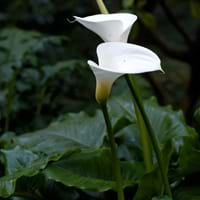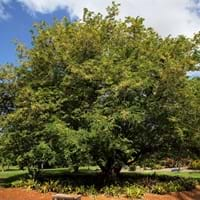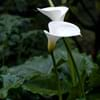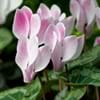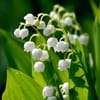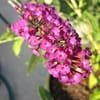Life Span
Perennial
Perennial
Type
Bulb, Flowering Plants
Tree
Origin
South Africa, Swaziland
Africa, India, Southeast Asia
Types
Passionfruit, Fire glow, Gem rose, Blaze, Crystal blush
Sweet Tamarind, Australian tamarind, Manila tamarind, Velvet tamarind, Spanish Tamarind
Number of Varieties
Not Available
Habitat
Swamps
Subtropical climates, Tropical regions
USDA Hardiness Zone
8-10
9-11
AHS Heat Zone
10-4
Not Available
Sunset Zone
2a, 2b, 5, 6, 8, 9, 12, 13, 14, 15, 16, 17, 18, 19, 20, 21, 22, 23, 24
Not Available
Habit
Clump-Forming
Spreading
Flower Color
Blue, Dark Purple, Light Purple, Red, White
Red, Yellow
Flower Color Modifier
Bicolor
Bicolor
Fruit Color
Not Available
Brown
Leaf Color in Spring
Dark Green
Green
Leaf Color in Summer
Green, Dark Green
Dark Green, Green
Leaf Color in Fall
Green, Dark Green
Dark Green, Yellow green
Leaf Color in Winter
Green, Dark Green
Dark Brown, Green
Leaf Shape
Arrowhead
Pinnate
Plant Season
Autumn, Spring, Summer
Spring, Summer, Fall, Winter
Sunlight
Full Sun, Part sun, Partial shade
Full Sun, Partial Sun
Type of Soil
Clay, Loamy
Clay, Loam, Sand
The pH of Soil
Neutral, Slightly Acidic
Acidic
Soil Drainage
Average
Average
Bloom Time
Spring, Summer
Late Spring
Tolerances
Wet Site
Drought, Salt
Where to Plant?
Container, Pot
Ground
How to Plant?
From bulbs, From Rhizomes, Seedlings, Transplanting
Layering, Seedlings, Transplanting
Plant Maintenance
Medium
Low
Watering Requirements
Over-watering can cause leaf problems or root diseases, Requires a lot of watering
Do Not over Water, Keep the ground moist but not water-logged
In Summer
Lots of watering
Lots of watering
In Spring
Moderate
Moderate
In Winter
Average Water
Average Water
Soil pH
Neutral, Slightly Acidic
Acidic
Soil Type
Clay, Loamy
Clay, Loam, Sand
Soil Drainage Capacity
Average
Average
Sun Exposure
Full Sun, Part sun, Partial shade
Full Sun, Partial Sun
Pruning
Prune to stimulate growth, Remove dead or diseased plant parts, Remove deadheads
Remove damaged leaves, Remove dead branches, Remove dead leaves
Fertilizers
All-Purpose Liquid Fertilizer
6-6-6 or 8-8-8
Pests and Diseases
Armillaria mellea, Gray mold, Leaf spot, Powdery mildew, Pythium rot, Rhizoctonia crown rot, Root rot, Thripes
Aphids, Borers, Mealybugs, Onion thrips, Root weevil, Soft scales, Whiteflies
Plant Tolerance
Drought
Drought
Flower Petal Number
Single
Single
Foliage Texture
Coarse
Bold
Foliage Sheen
Glossy
Matte
Attracts
Not Available
Beetles, Birds, Scale Insects
Allergy
Diarrhea, Intestinal gas, Vomiting
Diarrhea, Hives, Nausea, Vomiting
Aesthetic Uses
Beautification, Bouquets
Beautification
Beauty Benefits
Not Available
Glowing Skin, Good for skin, Improve skin tone, Reduces ageing, Skin cleanser
Environmental Uses
Air purification
Food for animals, Food for birds, Food for insects, Nesting sites for birds
Medicinal Uses
Not Available
Antioxidants, Inflammation, Rheumatism, Skin Disorders, Sore throat
Part of Plant Used
Flowers
Flowers, Fruits, Leaves
Other Uses
Showy Purposes
Culinary use, Used as a nutritious food item, Used as Ornamental plant, Used for its medicinal properties
Used As Indoor Plant
No
No
Used As Outdoor Plant
Yes
Yes
Garden Design
Not Available
Edible, Fruit / Fruit Tree, Shade Trees
Botanical Name
Zantedeschia Aethiopica
Tamarindus indica
Common Name
Calla Lily
Tamarind tree, Tamarind
In Hindi
Calla Lily
इमली का पेड़
In German
Calla-Lilien-
Tamarinde
In French
Lys calla
tamarinier
In Spanish
Cala
tamarindo
In Greek
Calla κρίνος
δέντρο Tamarind
In Portuguese
Calla
tamarindo
In Polish
Calla Lily
drzewo tamaryndowca
In Latin
Calla Lilium
tamarind ligno
Phylum
Magnoliophyta
Magnoliophyta
Class
Liliopsida
Magnoliopsida
Order
Alismatales
Fabales
Genus
Zantedeschia
Tamarindus
Clade
Angiosperms, Monocots
Angiosperms, Eudicots, Rosids
Tribe
Zantedeschieae
Detarieae
Subfamily
Aroideae
Caesalpinioideae
Number of Species
Not Available
Season and Care of Calla Lily and Tamarind tree
Season and care of Calla Lily and Tamarind tree is important to know. While considering everything about Calla Lily and Tamarind tree Care, growing season is an essential factor. Calla Lily season is Autumn, Spring and Summer and Tamarind tree season is Autumn, Spring and Summer. The type of soil for Calla Lily is Clay, Loamy and for Tamarind tree is Clay, Loam, Sand while the PH of soil for Calla Lily is Neutral, Slightly Acidic and for Tamarind tree is Acidic.
Calla Lily and Tamarind tree Physical Information
Calla Lily and Tamarind tree physical information is very important for comparison. Calla Lily height is 60.00 cm and width 60.00 cm whereas Tamarind tree height is 1,800.00 cm and width 800.00 cm. The color specification of Calla Lily and Tamarind tree are as follows:
Calla Lily flower color: Blue, Dark Purple, Light Purple, Red and White
Calla Lily leaf color: Dark Green
Tamarind tree flower color: Red and Yellow
- Tamarind tree leaf color: Green
Care of Calla Lily and Tamarind tree
Care of Calla Lily and Tamarind tree include pruning, fertilizers, watering etc. Calla Lily pruning is done Prune to stimulate growth, Remove dead or diseased plant parts and Remove deadheads and Tamarind tree pruning is done Remove damaged leaves, Remove dead branches and Remove dead leaves. In summer Calla Lily needs Lots of watering and in winter, it needs Average Water. Whereas, in summer Tamarind tree needs Lots of watering and in winter, it needs Average Water.
